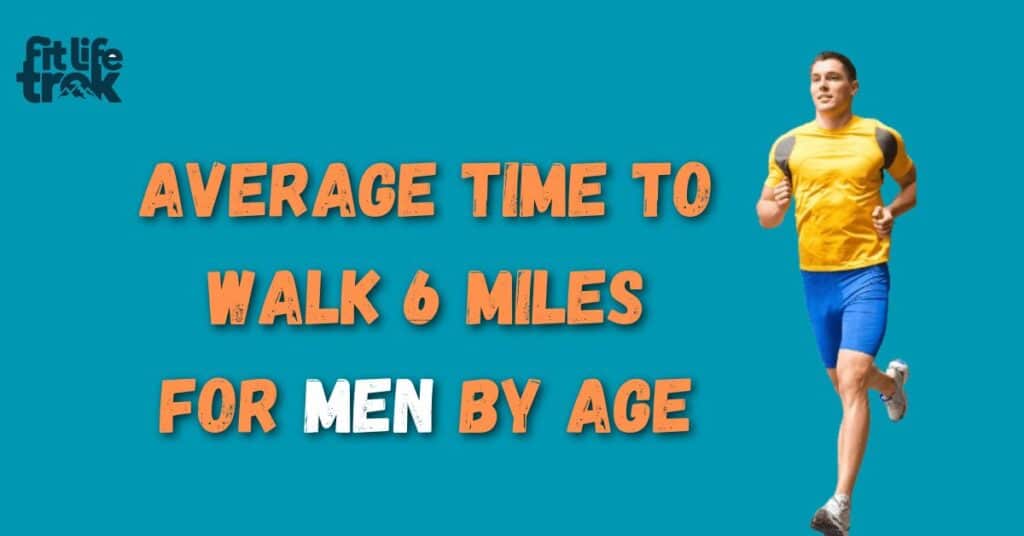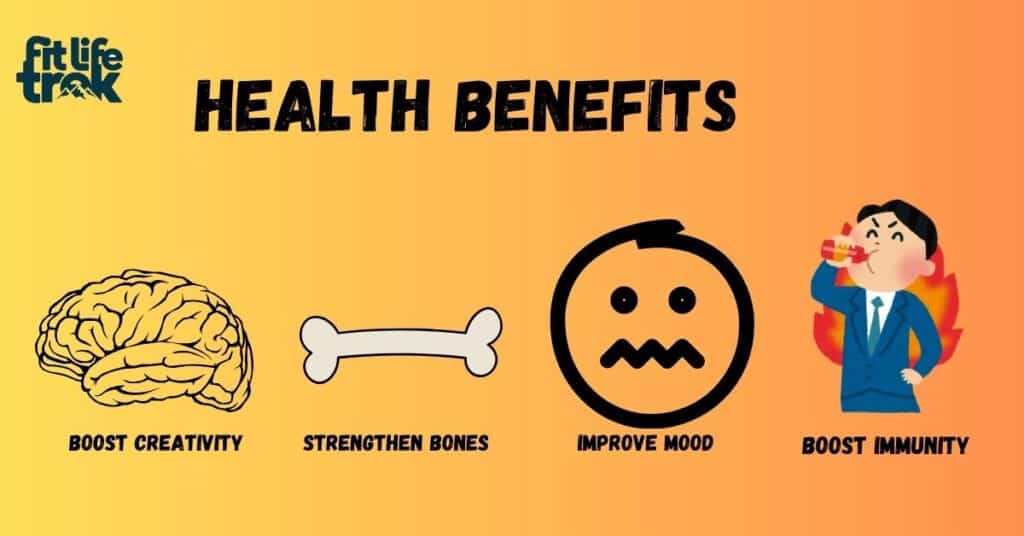Walking or running is an excellent way to maintain a healthy and active lifestyle. However, many people often wonder how long it takes to walk 6 miles and how to fit it into their busy schedules. Everyone strives to lead a healthier life, but it’s also important to manage time efficiently.
The great news is that we’ve got the perfect solution for you. In this comprehensive guide, we’ll explore how you can incorporate a daily 6-mile walk into your routine while maximizing the health benefits and minimizing time investment.
Stick with us to discover how to achieve the most effective walking experience in the shortest amount of time. Additionally, we’ll also provide insights into the time it takes to run 6 miles and how it compares to walking.
How Long Does It Take to Walk 6 Miles?
The average time to walk 6 miles typically ranges from 1.5 to 2 hours for most people. Your walking pace per mile plays a crucial role in determining the total time. Someone walking at a comfortable pace of 3 miles per hour will complete the distance in about 2 hours, while a person maintaining a brisk walking pace of 4 miles per hour can finish in just 1.5 hours.
Various factors affect your walking speed, including age, fitness level, terrain, and weather conditions. A flat, paved surface will allow for faster walking compared to a hilly or uneven trail. The key is finding a sustainable pace that works for your fitness level.
How Far is 6 Miles?
To put 6 miles in perspective, it equals approximately 9.65 kilometers. Understanding your walking distance helps you better plan your route and set realistic expectations. Think of it as walking the length of about 100 football fields or circling a standard running track 24 times.
The distance might seem daunting at first, but breaking it down into smaller segments makes it more manageable. Many people find it helpful to think of it as three 2-mile segments or six 1-mile portions when starting their walking routine.
Average Time to Walk 6 Miles for Women by Age

The walking time for men and women varies based on several factors, with age being a significant consideration. Here’s a detailed breakdown of walking speed for women by age group:
| Age Group | Average Speed (mph) | Estimated Time |
| 20-29 | 3.0 | 2.0 hours |
| 30-39 | 3.1 | 1.94 hours |
| 40-49 | 3.05 | 1.97 hours |
| 50-59 | 2.9 | 2.07 hours |
| 60-69 | 2.8 | 2.14 hours |
| 70-79 | 2.6 | 2.31 hours |
| 80+ | 2.2 | 2.73 hours |
Average Time to Walk 6 Miles for Men by Age

The walking speed for men tends to be slightly faster than women across age groups. Understanding these averages can help you set realistic fitness goals and track your progress effectively. Men’s walking speeds naturally adjust with age, but regular practice helps maintain a steady pace.
| Age Group | Average Speed (mph) | Estimated Time |
| 20-29 | 3.2 | 1.88 hours |
| 30-39 | 3.3 | 1.82 hours |
| 40-49 | 3.2 | 1.88 hours |
| 50-59 | 3.0 | 2.0 hours |
| 60-69 | 2.9 | 2.07 hours |
| 70-79 | 2.7 | 2.22 hours |
| 80+ | 2.3 | 2.61 hours |
Why is Walking Good?
The health benefits of walking daily are numerous and well-documented. From physical improvements to mental wellness, walking provides a full-body boost that’s hard to match with other forms of exercise. Let’s explore the specific benefits that make walking such an excellent choice for overall health.

Improves Heart Health
Walking benefits for heart health are significant. Regular walking strengthens your heart muscle, lowers blood pressure, and improves circulation. Just 30 minutes of brisk walking five days a week can reduce your risk of heart disease by up to 30%. A study by the American Heart Association shows that walking and heart health are directly connected, with each additional 1,000 steps per day reducing cardiovascular risk by 5%.
Help in Losing Weight
Walking for weight loss is an effective strategy when done consistently. A person weighing 150 pounds can burn approximately 100 calories per mile while walking. Burning calories through walking becomes even more effective when combined with a healthy diet and proper walking technique. The key is maintaining a walking pace for weight loss that challenges you without causing exhaustion.
Reduces the Risk of Dangerous Diseases
Regular walking helps prevent various chronic conditions. Research shows that benefits of daily exercise include a 30% reduction in diabetes risk and a 20% lower chance of developing certain types of cancer. Walking helps regulate blood sugar levels and strengthens your immune system.
Boost Immunity
Boosting immunity with exercise like walking increases the production of white blood cells. Studies indicate that people who walk regularly take fewer sick days and recover faster from illnesses. A brisk 30-minute walk can immediately boost immune cell production.
Improves Brain Health
Walking enhances cognitive function and memory. The increased blood flow from improving cardiovascular health directly benefits brain function. Regular walkers show a 50% lower risk of cognitive decline and better problem-solving abilities.
Encourages Creative Thinking
A Stanford University study found that walking increases creative output by an average of 60%. Walking to reduce stress also helps clear mental blocks and improve problem-solving abilities. Many successful people, including Steve Jobs, were known for their walking meetings.
Increases Energy
Walking energy boost is a natural phenomenon that occurs through increased oxygen flow and endorphin release. Morning walks can increase energy levels throughout the day by up to 20%. The key is maintaining a consistent walking schedule that aligns with your daily routine.
Strengthens Bones and Muscles
The impact of walking on bones is particularly beneficial for preventing osteoporosis. Weight-bearing exercise like walking helps maintain bone density and muscle mass. Regular walkers show a 40% lower risk of hip fractures compared to sedentary individuals.
Improves Mood and Mental Health
Walking for mental health provides natural stress relief and mood enhancement. Studies show that improving mood with walking can be as effective as medication for mild to moderate depression. The combination of fresh air, physical activity, and natural surroundings creates a powerful mood-boosting effect.
Is Walking 6 Miles in 90 Minutes Good?
Completing 6 miles in 90 minutes indicates a strong walking pace of 4 miles per hour. This is considered an excellent brisk walking pace that provides maximum health benefits. For most people, this represents a challenging but achievable goal with proper training and consistency.
How Many Steps Are in 6 Miles?
Calculating steps per mile depends on your stride length. The average person takes about 2,000 steps to walk one mile, making steps required for 6 miles approximately 12,000 steps. Here’s a quick calculation guide based on height:
| Height | Stride Length | Steps in 6 Miles |
| 5’0″ – 5’4″ | 2.0 feet | 13,200 steps |
| 5’5″ – 5’9″ | 2.2 feet | 12,000 steps |
| 5’10”- 6’2″ | 2.5 feet | 10,560 steps |
| 6’3″ + | 2.7 feet | 9,780 steps |
How Many Calories Do You Burn Walking 6 Miles?
Calories burned walking 6 miles varies based on weight and walking speed. Here’s a breakdown of calories per mile walked:
| Weight (lbs) | Calories/Mile | Total for 6 Miles |
| 130 | 85 | 510 |
| 155 | 102 | 612 |
| 180 | 118 | 708 |
| 205 | 134 | 804 |
Is Walking 6 Miles a Day Enough?
The walking 6 miles a day benefits exceed most health recommendations. The CDC suggests 150 minutes of moderate exercise weekly, and a daily 6-mile walk easily surpasses this goal. This distance provides excellent cardiovascular benefits while being gentle on your joints.
Plan Your Walking Routine
Creating an effective walking plan starts with clear goals and consistent execution. Your daily walking plan should include:
- Set Your Goals: Define clear, measurable objectives for your walking program.
- Choose a Walking Route: Plan safe, enjoyable walking route planning options.
- Warm-Up: Always start with 5-10 minutes of gentle walking.
- Start Slow: Build up your distance gradually.
- Include Intervals: Add walking intervals for fitness to improve endurance.
- Cool Down: End each walk with gentle stretching.
- Establish a Schedule: Create a consistent walking schedule.
- Track Progress: Use apps or journals for tracking walking progress.
- Listen to Your Body: Adjust your routine based on how you feel.
Read More About: How Long Does It Take to Walk 5 Miles? Average Times for Various Age Groups and Genders
Safety Tips
Safe walking practices are essential for an enjoyable experience. Consider these important safety measures:
- Wear reflective gear in low light conditions
- Choose well-lit, populated routes
- Carry identification and a phone
- Stay hydrated and wear appropriate footwear
- Follow local traffic rules and use sidewalks when available
Conclusion
Walking 6 miles is an achievable goal that offers tremendous health benefits. Whether you’re walking for fitness, weight loss, or mental clarity, consistent practice and proper technique will help you reach your goals. Remember, the journey of a thousand miles begins with a single step or in this case, six miles at a time.
Incorporating a daily 6-mile walk into your routine not only boosts your physical health but also enhances mental well-being by reducing stress and improving mood. By setting realistic goals, planning enjoyable routes, and staying consistent, you can make walking a fulfilling and sustainable part of your lifestyle. Every step you take not only brings you closer to better health but also to a more balanced and energized version of yourself.
Frequently Asked Questions: Walking 6 Miles
What’s a good starting pace for beginners?
Start at a comfortable 2.5-3 mph pace and gradually increase as your fitness improves.
Should I walk 6 miles every day?
Listen to your body and start with 3-4 days per week, gradually increasing as your stamina builds.
How can I make walking more interesting?
Try different routes, listen to podcasts, or join a walking group to keep motivation high.
What should I eat before a 6-mile walk?
A light meal with complex carbohydrates and protein about 1-2 hours before walking is ideal.
How do I prevent blisters while walking?
Wear properly fitting shoes and moisture-wicking socks, and address hot spots immediately.

